This is an image of Olympus Mons.
Click on image for full size
NASA
Olympus Mons
The largest volcano in the solar system is Olympus Mons, shown in the image to the left. Olympus Mons is a Martian shield volcano. The altitude of Olympus Mons is three times the altitude of the largest peak on Earth, Mt. Everest, and is as wide as the entire chain of Hawaiian Islands. Measurements returned by Mars Global surveyor demonstrate the unbelievable size of Olympus Mons. Olympus Mons is a very large volcano for a body the size of Mars, given the fact that Mars is three times smaller than the Earth. The size of Olympus Mons suggests something special about the surface of Mars and how Mars cooled over time.
Mars has several other *very* large volcanoes. Some of them are located on top of a big bulge in the side of Mars called the Tharsis Ridge. The volcanoes built during this period were built in a manner similar to that in which the Hawaiian Islands came into being on Earth, namely by a hot plume, rising from the deep interior of the planet, which builds land on the surface. The size of these volcanos suggests that Mars had already cooled sufficiently to form a lithosphere thick enough to support large volcanoes without allowing them to sink.
You might also be interested in:

How did life evolve on Earth? The answer to this question can help us understand our past and prepare for our future. Although evolution provides credible and reliable answers, polls show that many people turn away from science, seeking other explanations with which they are more comfortable.
...more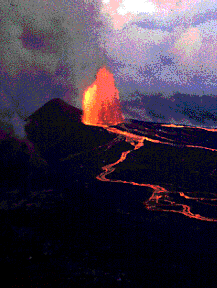
Shield volcanoes can grow to be very big. In fact, the oldest continental regions of Earth may be the remains of ancient shield volcanoes. Unlike the composite volcanoes which are tall and thin, shield
...more
Many of the reasons the history of Mars is different from that of the Earth stem from the small size of Mars. Mars is about 1/3 the size of the Earth. This means that it was able to cool much more rapidly
...more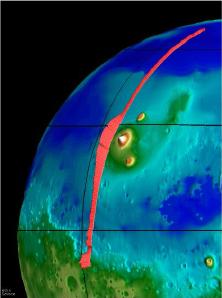
This image, taken from the Mars Global Surveyor mission (MGS), shows the Tharsis Ridge, the green/blue area in the middle of the picture, as well as a portion of the southern hemisphere of Mars. The green
...more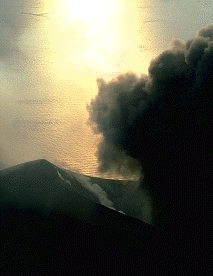
Volcanism is part of the process of bringing material up from the deep interior of a planet and spilling it forth on the surface. Eruptions also deliver fresh gases to the surface from the melted material
...more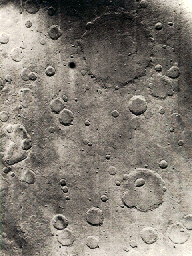
This is an example of the cratered terrain on Mars. Almost the entire surface of Mars is cratered to various degrees. The Tharsis Ridge, where the volcanoes of Mars are located, is lightly cratered. The
...more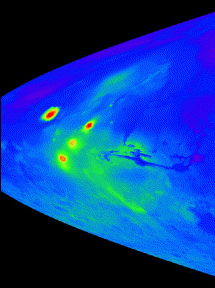
Unlike Earth, there is no plate tectonics on Mars. The Martian surface does not seem to have changed or moved in billions of years. The evidence for this fact can be found in two ways. 1.) An examination
...more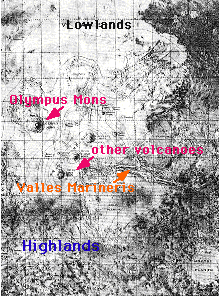
The surface of Mars can be broken into two main regions: highlands and lowlands. The highlands are in the southern hemisphere (the bottom of the figure), and the lowlands are in the northern hemisphere
...more















